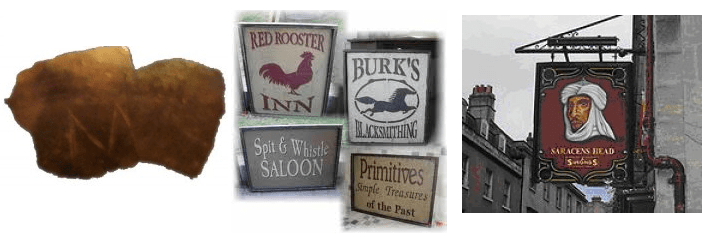I’m going to give you a brief history so you’ll know, whether you wanted to know or not, all about signs, printing and the makers.
When you look around, or drive around, if you live in most industrialized countries on the planet, your world is full of signs. If you’re like most people, you simply accept that they are made by sign makers, but you don’t give it much thought; you pretty much just take them for granted, at least until you get lost!
Possible Story of the First Prehistoric Sign Making
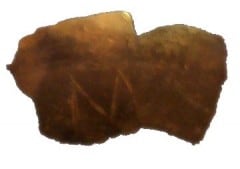 In the Stone Age, Grog and his wife, Groggette, sent a smoke signal invitation to Thor and his wife, Thorina, to come over for a mastodon barbecue. However, they never showed up because, legend has it, they got lost because there were no guide markers. So, Grog and Groggette became the world’s signage creators, then re-sent the smoke signal invite the next weekend, but this time had made and posted some markers in the forest, and the Thor’s were able to come over for some delicious barbecued mastodon after all with the world’s premier guide posts.
In the Stone Age, Grog and his wife, Groggette, sent a smoke signal invitation to Thor and his wife, Thorina, to come over for a mastodon barbecue. However, they never showed up because, legend has it, they got lost because there were no guide markers. So, Grog and Groggette became the world’s signage creators, then re-sent the smoke signal invite the next weekend, but this time had made and posted some markers in the forest, and the Thor’s were able to come over for some delicious barbecued mastodon after all with the world’s premier guide posts.
OK…I kinda just made that up, but it’s not too far from the truth. Early signs included piles of stones or sticks pointing in a direction that one wanted someone to go…of course, the range of travel was likely somewhat smaller before cars (B.C.), so most people probably didn’t need them for most things ‘cuz they simply just knew where things were.
Signs that are Still in Existence Today Built by Ancient Producers and the Early Modern Evolution of an Art Form/Industry
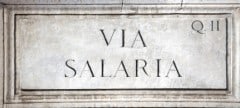 As people became civilized and began to travel via trade routes, the Egyptians were among the earliest civilizations to make signs. The Greeks and Romans carried on the tradition, with the Romans making what we might consider the first modern display of terra cotta. Christians were one of the first groups to use displays with logos, adopting the fish and the cross as a mark of where their churches were, although pagan religions had long used idols as symbols of their temples as well.
As people became civilized and began to travel via trade routes, the Egyptians were among the earliest civilizations to make signs. The Greeks and Romans carried on the tradition, with the Romans making what we might consider the first modern display of terra cotta. Christians were one of the first groups to use displays with logos, adopting the fish and the cross as a mark of where their churches were, although pagan religions had long used idols as symbols of their temples as well.
In 14th Century
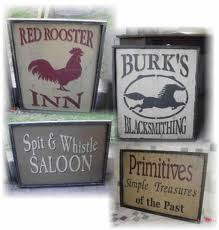 Late in the 14th Century, King Richard III legislated that all nobility must post their lands with their family name or coat of arms, and that all taverns must clearly be marked as ale houses, so all the taverns hired sign makers to make them displays as well. Some have speculated that King Richard III had invested heavily in a local signage conglomerate, but others argue that this early legislation was most likely enforced so the tax collectors would know where to go to be able to collect taxes on booze and persons who actually had money, something which was done away with during the American Revolution, but reinstated soon after.
Late in the 14th Century, King Richard III legislated that all nobility must post their lands with their family name or coat of arms, and that all taverns must clearly be marked as ale houses, so all the taverns hired sign makers to make them displays as well. Some have speculated that King Richard III had invested heavily in a local signage conglomerate, but others argue that this early legislation was most likely enforced so the tax collectors would know where to go to be able to collect taxes on booze and persons who actually had money, something which was done away with during the American Revolution, but reinstated soon after.
Early signage within towns had symbols indicating what a shop might produce (Ye Olde Shop, etc.) or what service was performed (Ye Olde Shop – Purveyors of Tavern Dislays). A bush was an early symbol of a tavern, but as towns grew and there might be several taverns, distinction had to be made by the owners, so you might see a tavern where the ad agency had colluded to come up with the visual of a dragon or a rooster (sorry tavern owners, but a dragon seems just a tad more studly than a rooster!) to signal ownership of the tavern.
So a conversation might go something like this…”Hi Cotswold…let’s go grab a beer at the Rooster Tavern.” Nah,” says Cotswold, “I prefer the Blue Dragon, it’s more manly sounding.” “I don’t care about that,” retorts Harald, “I’m your wife!”
By 16th to 17th Century
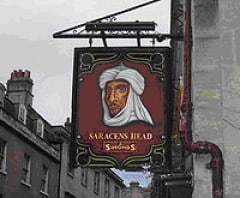 By the 16th and 17th century A.D., most cities were full of businesses trying to attract customers to their store, and producers began creating more elaborate signs. It was during these years that they established their profession as both art and industry, and we’ve been broke ever since. During this time, the signage displays were the most artistic of any time in recorded history, and often beautiful wrought-iron hangers displayed like this one.
By the 16th and 17th century A.D., most cities were full of businesses trying to attract customers to their store, and producers began creating more elaborate signs. It was during these years that they established their profession as both art and industry, and we’ve been broke ever since. During this time, the signage displays were the most artistic of any time in recorded history, and often beautiful wrought-iron hangers displayed like this one.
However, some sign makers began making graphics too big, and where the streets were narrow, speeding wagons would sometimes collide the driver’s head into an over-sized display (typically purchased by powerful corporate conglomerates like WalMart), especially Cotswold and Harald who were not paying very close attention after downing a few at the Rooster Tavern (she won the argument). It was in these times that the most enterprising government officials learned the truth – that you could both regulate the size and tax them at the same time!
Continue reading in Part two.
Popular Posts:

